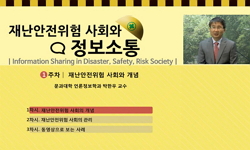사람들은 주로 미디어를 통해 위험에 대한 정보를 습득하고 이해하기 때문에 미디어는 위험에 대한 정확한 정보를 제공해야 한다. 따라서 본 연구는 현대 사회에서 중요한 위험 이슈인 ‘발...
http://chineseinput.net/에서 pinyin(병음)방식으로 중국어를 변환할 수 있습니다.
변환된 중국어를 복사하여 사용하시면 됩니다.
- 中文 을 입력하시려면 zhongwen을 입력하시고 space를누르시면됩니다.
- 北京 을 입력하시려면 beijing을 입력하시고 space를 누르시면 됩니다.

위험정보에 관한 미디어 보도의 정확성 연구:발암물질 위험을 중심으로 = Accuracy of Media Coverage on Risk Information:A Case of Carcinogenic Hazards
한글로보기https://www.riss.kr/link?id=A100565080
-
저자
윤문영 ; 좌보경 ; 백혜진 ; Moon-young Yun ; Bokyung Jwa ; Hye-Jin Paek
- 발행기관
- 학술지명
- 권호사항
-
발행연도
2012
-
작성언어
-
- 주제어
-
KDC
300
-
등재정보
KCI등재
-
자료형태
학술저널
-
수록면
41-79(39쪽)
- 제공처
-
0
상세조회 -
0
다운로드
부가정보
국문 초록 (Abstract)
사람들은 주로 미디어를 통해 위험에 대한 정보를 습득하고 이해하기 때문에 미디어는 위험에 대한 정확한 정보를 제공해야 한다. 따라서 본 연구는 현대 사회에서 중요한 위험 이슈인 ‘발암물질’을 주제로 선정하고 위험 정보에 대한 미디어의 정확성을 진단해 보고자 하였다. 2003 년부터 2012 년 6 월까지 국내 11 개 일간지에서 보도된 641 개의 기사를 대상으로 내용분석을 실시 하였으며, 이를 위해 국내 검색 엔진 1 위인 네이버를 통하여 '발암물질'이라는 키워드로 기사를 검색, 수집하였다. 보도의 정확성을 판단하기 위한 지표로써 국제 암 연구기관(IARC: International Agency for Research on Cancer)에서 제공하는 정보를 바탕으로 ‘발암물질 급수표기’, ‘발암물질 명 표기’항목을 선정하였으며 ‘기준치 표기’, ‘전문기자 유무’ 항목을 추가한 총 네 가지 항목으로 분석을 진행 하였다. 연구 결과, ‘발암물질 급수’가 정확하게 표기된 기사는 전체 기사의 21.5%에 그쳤으며, 20%의 기사들은 ‘발암물질 명’을 부정확하게 표기하고 있었다. 또한 약 41%의 기사만이 ‘기준치’를 제시하였으며, ‘전문기자’가 작성한 기사의 비율은 전체 기사의 1%에도 미치지 못하는 것으로 나타났다. 이러한 연구 결과는 발암물질 위험과 관련된 미디어 보도에 있어서 그 정보의 정확성이 더욱 개선 될 필요가 있다는 것을 시사하였다.
다국어 초록 (Multilingual Abstract)
Since people often learn and understand information about risks through media, the media should provide accurate risk information. This study’s purpose is to examine how accurately media provide information on the important risk issue of carcinogeni...
Since people often learn and understand information about risks through media, the media should provide accurate risk information. This study’s purpose is to examine how accurately media provide information on the important risk issue of carcinogenic hazards. A content analysis was conducted on 641 news stories in eleven daily newspapers from a ten-year period (2003 and 2012). These newspapers were searched and the news story data were collected through Naver, Korea’s number one search engine. The accuracy of media coverage was operationally defined as accuracy in the following categories; (1) labeling of carcinogens; (2) classifications in terms of carcinogenic risks (by IARC: International Agency for Research on Cancer); (3) presence of safety standards; and (4) use of expert reporters. Descriptive statistics show that, out of the total news story samples, only 21.5% accurately classified the risks they featured, while 20% mislabeled the carcinogens they featured. About 41% of the total story samples indicated the specific safety standards of particular carcinogens. In addition, less than 1% of the total stories were written by expert reporters. The results indicate that there is an urgent need to improve the news media’s accuracy in providing carcinogenic hazard information.
목차 (Table of Contents)
- 1. 서 론
- 2. 문헌연구
- 3. 연구문제
- 4. 연구방법
- 5. 결 과
- 1. 서 론
- 2. 문헌연구
- 3. 연구문제
- 4. 연구방법
- 5. 결 과
동일학술지(권/호) 다른 논문
-
- 한국헬스커뮤니케이션학회
- Bumsub Jin
- 2012
- KCI등재
-
- 한국헬스커뮤니케이션학회
- Won Yong Jang
- 2012
- KCI등재
-
Cybercoping of Mental and Physical Health Problems and Its Health Consequences
- 한국헬스커뮤니케이션학회
- Jeong-Nam Kim
- 2012
- KCI등재
-
Determinants of Primary and Multiple Channel Selection for Health Information Search
- 한국헬스커뮤니케이션학회
- Hyun Jung Oh
- 2012
- KCI등재




 스콜라
스콜라



